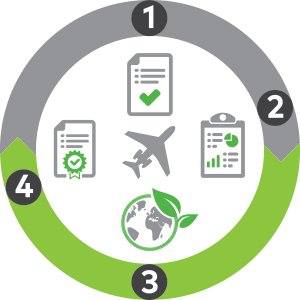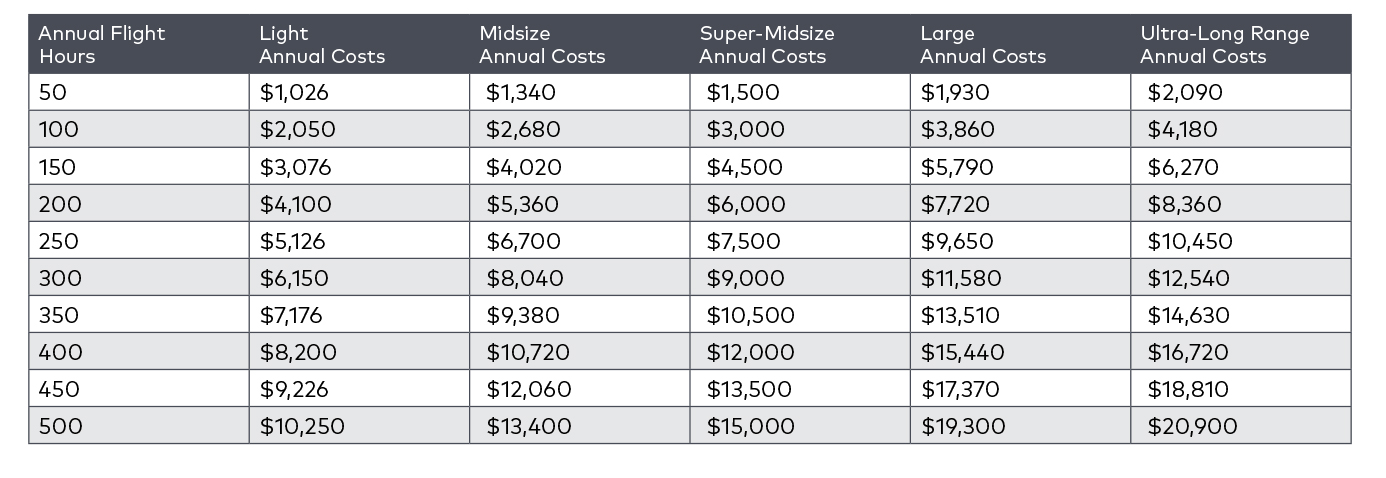
What are Carbon Offsets for Business Jets?
June 21, 2021
Available today, carbon offsets are a starting point to make a positive impact on our environment.
The aviation industry is tirelessly innovating to develop more fuel-efficient engines and alternate energy sources like hydrogen and electric propulsion. And develop more sustainable fuels from feedstock and refuse that would otherwise go to landfills. While these technologies are the future, what about today? Carbon offsets are available right now. They are a simple, easy, and direct way for jet owners and passengers to offset their carbon emissions by supporting sustainable projects around the world—such as expanding solar and wind energy farms, methane gas capture and reforestatio
Carbon Offsets enable jet owners to:
- Achieve carbon-neutral jet operations
- Support verified sustainability projects worldwide
- Augment or commence corporate sustainability programs
- A positive action aircraft owners and organizations can take immediately to support a greener future.
So what exactly are carbon offsets? How do they work? What do they cost? How are sustainability projects verified? For answers, we turned to Nancy Bsales, a leading carbon strategist and chief operating officer of 4AIR, one of our expert sustainability partners.
First, what is a carbon offset?

Carbon offsets are one way to decrease your net carbon footprint. In business aviation, that means you offset your CO2 emissions from burning jet fuel by funding measurable, verifiable emission reductions from certified projects that remove the equivalent amount of C02 from the environment.
Carbon credits (or carbon offsets) are certificates generated by projects or activities that reduce, avoid or destroy greenhouse gases. Carbon offsets are measured in metric tons—also spelled tonnes— of carbon-dioxide equivalent. Each carbon offset represents a reduction of one tonne of CO2, and each offset has a traceable serial number.
How does a carbon offset program work?
There are four steps to offsetting the carbon dioxide emissions from your aircraft.
1: Calculate the carbon footprint of your aircraft.
One gallon of jet fuel has the carbon intensity of 9.6 kg CO2.* Over the course of a month, you track how many gallons of jet fuel is purchased for your aircraft, then multiply the gallons of jet fuel by the carbon intensity. The result is the metric tonnes of carbon emissions that jet fuel will release into the atmosphere.
2: Purchase and retire carbon offsets.
Clay Lacy Aviation provides an easy and transparent carbon offset program for customers through our industry-leading partners. If you are not a Clay Lacy customer, contact a company like 4AIR who can help you establish a comprehensive sustainability program that includes purchasing carbon offsets.
3: Funds from your retired offsets are distributed to a sustainability project.
The funds you provide to purchase carbon offsets are funding the reduction and distributed to the selected sustainability project through a verifying organization such as GoldStandard.org or Verra.org. To learn more about projects supported see your official notice of your commitment.
4: Your offsets are reported to you.
You receive official notice of your carbon offsets for your records.
5. To ensure maximum transparency and accountability, Clay Lacy has its program reviewed on the corporate and aircraft level by 4Air. Calculations, emissions and carbon offsets are verified periodically for accuracy and appropriate retirements. Each aircraft sustainability receives a bronze rating from 4Air when meeting the level criteria and will receive a certificate and seal to display.
How much does it cost to participate?
The annual cost to offset 100% of your carbon emissions for your jet depends on the number of gallons purchased each year. This table has some representative ranges to give you a rough estimate.

How do I know that the offsets are linked to actual sustainability projects?
Project owners, such as solar and wind energy developers, or forest land owners can sell carbon offsets to earn revenues to develop, maintain and keep expanding their projects into the future. Purchasing carbon credits that are certified by one of the major standards, like Verra and the Gold Standard is an easy way to ensure your funds are being distributed properly. These standards are developed by world-leading non-governmental organizations (NGOs) and have been in the carbon market for more than 15 years. This assures unsurpassed levels of transparency, environmental integrity and impactful contributions to sustainable management and development.
How do these projects use the money?
The income manages the project and ensures emission reductions. Projects depend on climate finance to be established and continue. A project would not be viable without the sale of carbon offsets to provide necessary revenue needed for climate action. Here is an example, for a forestry conservation project, the money pays for land lease or buying land, salaries to project staff and often provides additional support to local communities, hospitals and schools.
Wouldn’t it be better to just reduce emissions instead?
Yes, reducing emissions is the ultimate objective, however it is not “either or,” but a combination of reduction and offsetting. We always recommend that you first measure and then reduce your carbon emissions to the extent that is economically feasible. This includes energy efficiency measures and improved operations systems, as well as switching to SAF, renewable diesel and solar power. But in the meantime, carbon offsetting is the most practical and cost-efficient way to neutralize your residual emissions as innovative technologies and sustainable fuels become more accessible to the aviation industry.

© Gulfstream Aerospace
What is the future of carbon offsets?
The demand for carbon offsets has increased rapidly, backed by carbon neutrality commitments from businesses and corporations. It is expected to continue to increase in the coming years as a way to augment actual emissions reductions.
To learn more, visit:
For details on carbon offsetting, Clay Lacy clients should contact their aircraft manager, charter executive or FBO manager. All others can contact 4AIR’s Nancy Bsales at info@4air.aero to learn about options for you and your jet.
*See the free cross-sector GHG Emissions Calculations Tool.
Additional topics to explore:
- Learn more about Clay Lacy’s Carbon Offset Program for Aircraft Management clients.
- FAQ about Sustainable Aviation Fuel (SAF).
- 4Air a new standard for aviation sustainability.
- Learn more about Clay Lacy’s Sustainability Strategy.


